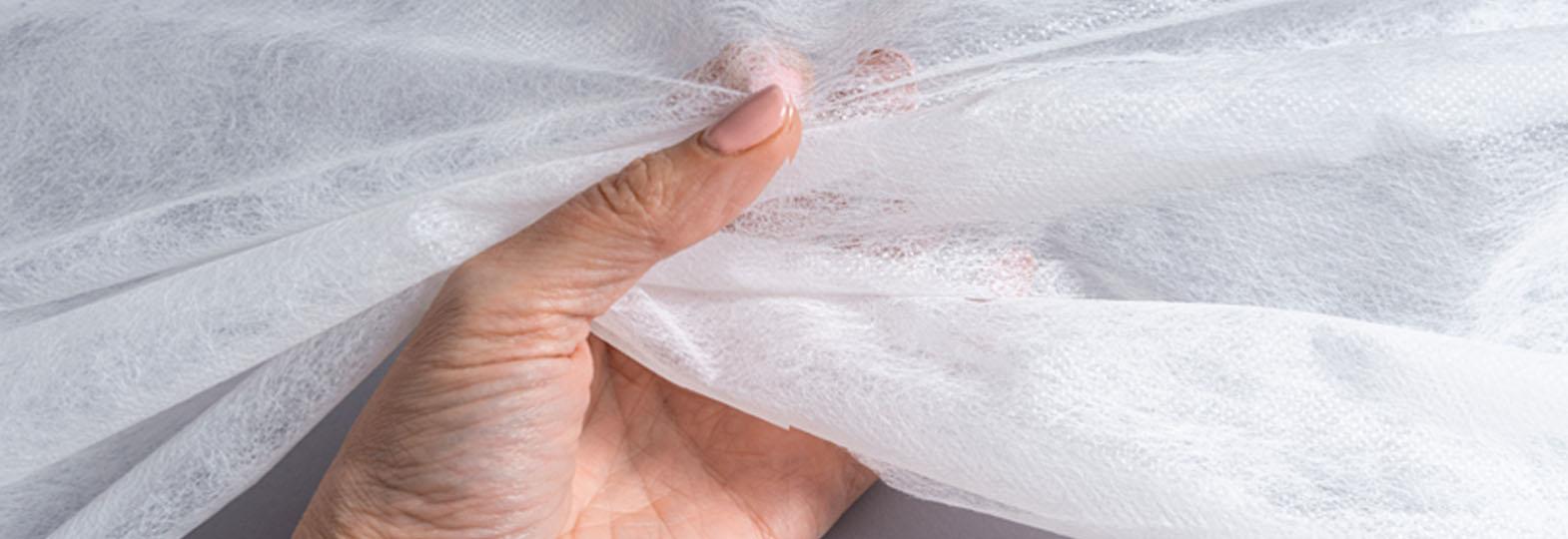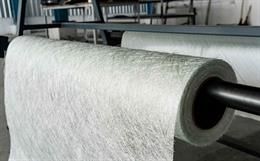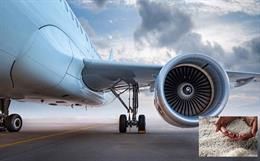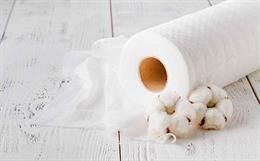The applications for nonwovens continue to expand due to the wide range of functional performance properties it is possible to engineer into them.
The term ‘nonwoven’ - describing something that a product is not, as opposed to what it actually is - has never accurately represented its industry, but any attempts to replace it over the years have floundered.
A nonwoven is defined by ISO standard 9092 and CEN EN 29092 as: “An engineered fibrous assembly, primarily planar, which has been given a designed level of structural integrity by physical and/or chemical means, excluding weaving, knitting or paper making.”
As such, nonwovens differ from other textiles, being turned from fibres or polymer resins directly into fabrics, with bonding of the web by various methods - chemical, mechanical or thermal - replacing the weaving or knitting together of the yarns in traditional textiles.
The elimination of a yarn spinning stage means nonwoven production is fast and cost effective and many years ago these materials were seen as low-price substitutes for traditional textiles, which is far from the case today.
Sophistication
The nonwovens industry is now worth an annual $70 billion, highly profitable and very sophisticated, with healthy annual growth rates often in double digits in certain sectors and parts of the world.
It is also perhaps one of the most intensive in investing in new technology, and also in research and development, and nowhere is this more evident than in the absorbent hygiene products (AHPs) industry.
The key products of this industry are baby diapers, femcare products such as sanitary pads, panty liners etc, and those for coping with adult incontinence (AI).
Forecasts vary, but the combined global value of these markets was estimated at around $120 billion in 2021 and they are largely based on nonwoven fabrics in combination with superabsorbent polymers (SAPs), fluff pulp and various elastic components.
The nonwovens used in these products are predominantly spunlaid, based on spunbond and meltblown fabrics and layered combinations of the two, and they are manufactured with machinery originally based on the extrusion of plastics, with the fibre structures simultaneously formed from molten filaments and manipulated.
In the basic spunbonding system, sheets of synthetic filaments are extruded from polymer onto a conveyor as a randomly-oriented web, as a continuous polymer-to-fabric operation.
Commercialisation
Most of the first spunbonding systems originated with fibre producers with proprietary technologies and the first commercial systems came in the 1960s. The next major step was with the introduction of Reifenhauser’s Reicofil system in 1984.
The Reicofil system has been continuously improved and there has been a big increase in productivity. The speed of the latest Reicofil 5 line for spunbonding is 270 kg/h/metre of beam, while for meltblowing it is 70 kg/h/metre of beam.
Meanwhile, there are around 1,200 machines across the world converting these fabrics into baby diapers alone, typically at an average rate of 800 a minute, equating to roughly 1.5 billion per day.
Robotics
With production at such an advanced level it would appear there is little room for technology innovation, but the latest Industry 4.0 and robotics developments are now opening up further opportunities for ensuring integrated and fault-free operations in spunmelt manufacturing plants.
A.Celli Nonwovens, for example, is introducing the Automated Storage and Retrieval System (ASRS) to bring a new level of flexibility and efficiency to plant operations.
As a specialist in the post-production preparation technologies for finished nonwovens for the AHP industry – including winders and slitters, flexographic printers and lamination and packaging machinery – the company, headquartered in Porcari, Italy, has designed the ASRS to provide real-time inventory management and full control of every phase of product handling.
The optimised storage and retrieval of rolls, reels and bundles ensures that all products fully comply with a customer’s requirements at all times.
AGVS
The company’s R-Way packing system automatic guided vehicles (AGVs) are responsible for the movement of materials around the warehouse and plant and between individual machines, and perfectly synchronised with pre-set processing and shipping orders.
“The focus of the R-Way team is on flexible technologies for safely and efficiently handling master rolls and finished products, with payloads above five tons and a lifting height capacity of up to 8.5 metres for lightweight products and 6.5 metres for heavier reels,” explains A.Celli’s sales and project manager Francesco Furzi. “We are also committing to a new generation of navigation systems, such as autonomous driving methods, that can reduce the impact on the infrastructure of our customers, while offering the utmost flexibility in reconfiguring and reprogramming the navigation flow.
“We have access to the most efficient lithium batteries and recharging methods, and have built an impressive supply chain of the best brands in the market, in order to offer our customers a superior quality and an unlimited 24/7 support, with no bottlenecks.”
Rediroom
The essential shortage of facemasks and PPE and the panic buying of items such as diapers and wipes during the COVID-19 pandemic illustrated the essential role of many nonwoven-based disposables but also proved a huge driver of innovation.
One striking development in the medical field arising from the pandemic is the Rediroom – an ingenious mobile instrument cart that can be expanded into a fully HEPA (high-efficiency particulate absorbing) air-filtered isolation room with hands-free entry in just five minutes.
Developed by UK company GAMA Healthcare, Rediroom provides a flexible solution to increasing isolation capacity in response to outbreaks of infection, suspected or unconfirmed infections, and the ability to isolate patients anywhere, including multi-occupancy hospital wards. This reduces the risk of hospital acquired infections (HAIs).
Rediroom was fully field-tested and proven by the UK’s National Health Service (NHS) under extremely testing circumstances during the pandemic and has subsequently been launched into key territories across EMEA, Asia and the Americas.
The structure consists of a PP spunbond canopy roof and double laminated PP/PE spunbond walls with PVC windows, and is sealed in place with double-sided peelable tape. All materials are treated with anti-static, anti-flammable and anti-odour agents.
Isolation
Rediroom is designed to isolate against the common diseases spread through droplet and direct contact, rather than through aerosol like COVID-19, and the protection it provides is most effective for diseases such as norovirus, seasonal flu, C. diff, and MRSA.
Nevertheless, the response to it was highly positive at the over 30 NHS trusts where it was installed, at a time of great strain on the system.
Rediroom’s HEPA and carbon filters remove 99.995 per cent of particles down to 0.3 microns making it more efficient than an N95 respirator and small enough to trap respiratory droplets and bacteria before air is returned to the ward.
Thorough cleaning of the cart takes around 15 minutes.
Rediair
GAMA has also launched Rediair – an instant air purification device which provides clean air where and when it is needed by capturing particulates, odours and 99.995 per cent of airborne pathogens.
Particularly useful in poorly ventilated spaces, it is equipped with dual HEPA 14 and carbon filters with the ability to capture ten times the particles of a HEPA 13 machine. Adaptable to any situation, Rediair has four different operating modes that begin to decontaminate the surrounding air within seconds.
Clinell Universal
GAMA’s Clinell Universal nonwoven wipes are meanwhile already widely used in hospital environments as products that are proven to reduce the spread of pathogens that cause healthcare-associated infections, reducing the risk of MRSA acquisition by 55 per cent and VRE contamination by 97 per cent.
Preventing a single case of C. difficile, for example, frees up 12 bed days and releases an average of £5,126. For the Royal Free London NHS Foundation Trust, implementing Clinell Peracetic Acid Wipes has been calculated to result in savings of £660,000 per year.
Clinell products are proven against more than 30 clinically relevant pathogens in realistic conditions. In addition, shared patient equipment in hospitals is decontaminated multiple times daily and if the products used aren’t well formulated for material compatibility, it can cause premature failure of medical devices.
Clinell Universal wipes have best-in-class compatibility with common surface materials and are approved by medical device manufacturers for over 100 pieces of healthcare equipment.
The wipes are balanced for skin pH, dermatologically tested and shown not to induce skin irritation on occlusive patch testing, including on those with sensitive skin.
GAMA provides point of use dispensers, on-the-ward training, bespoke posters and audit tools, all free-of-charge in the UK.
“So far, we have provided over 150,000 dispensers to the UK’s NHS hospitals and in the past 12 months we have trained over 16,000 frontline NHS staff,” says Phil Norville, GAMA’s clinical director.
Filtration
The dangers of airborne viruses and other contaminants to health were known long before the COVID-19 pandemic, as was the fact that the quality of indoor air also has a direct influence on both the cognitive performance and well-being of people. Post-pandemic, effective filter media based on nonwovens remain central to air purification.
A leader in this field is Mann Hummel, headquartered in Ludwigsburg, Germany, which continues to introduce energy-efficient nonwoven air filters with an A energy rating, which enable building operators to reduce energy costs. The company says it offers more A rated air filters in the Eurovent filter classes than any other supplier on the market.
Aircube
New to the company’s range is the Aircube Eco S 4V, the world’s first synthetic media compact filter to achieve an A rating. It is best-in-class for energy efficiency according to Eurovent 4/21. With an installation depth of 292 mm, its energy consumption is only 767 kWh per year. It also achieves up to 70 per cent longer service life than comparable filters on the market. This allows building operators to not only reduce their energy and maintenance costs, but also reduce their CO2 footprint by approximately 10 kg per year compared to the Aircube Eco 4V predecessor model from the range.
The A rated Airpocket Eco Plus is another new product that leads the market in energy efficiency for bag filters in the ePM1 filter classes. The ePM1 65 per cent with standard dimensions of 592 x 592 x 635 mm and 10 pockets has an energy consumption of 734 kWh per year. Compared to its predecessor, energy consumption has been reduced by approximately 13 per cent through the use of market-leading nonwoven media with nanofibre technology.
HVAC
An HVAC (heating, ventilation and air conditioning) system is responsible for about 50 per cent of a building’s energy costs and air filters have a significant share, accounting for around 8 per cent of the building’s electricity costs. Looking at the lifecycle cost of an air filter, about 80 per cent is energy and only 10 per cent is the purchase cost of the filter, with the rest being maintenance and disposal costs. The bottom line is that choosing energy-efficient air filters offers building owners significant potential to reduce energy costs. Depending on what the building owner is currently using, these savings can be many times greater than the additional price of the more efficient air filter. The change can be made without affecting air quality and without retrofitting or modifying the system.
Outdoor Air
Mann Hummel is also taking the need for air purification outdoors to the next level.
The company has now installed more than 400 of its Filter Cubes worldwide, spread across 140 columns and cleaning almost two billion litres of air per hour – roughly equivalent to the air demand of 4.1 million people.
Filter Cube technology has been developed for particularly polluted roads and junctions. The Cubes draw in the polluted air and bind over 80 per cent of the nitrogen dioxide (NO2) and particulate matter (PM10). The heart of the technology is a combination filter which comprises a highly effective nonwoven particle filtration layer and activated carbon layers that adsorb nitrogen dioxide. The activated carbon media absorb NO2 very effectively due to their large surface area. Thanks to their modular design, the Filter Cubes can be assembled to form adaptable filter columns.
The first systems were installed in December 2018 in Stuttgart, the capital of the German state of Baden-Werttemberg. In 2020, a scientific report that examined the effectiveness of the installations along the street ‘Am Neckartor’ concluded that, on average, a reduction of 9 per cent in nitrogen dioxide pollution was achieved, and in the area of the pavement and close to the buildings even a decrease of up to 19 per cent. The studies focusing on PM10 particulate matter showed a reduction of more than 10 per cent on average and ozone concentrations were reduced by more than 11 per cent.
Packaging
An often-overlooked area for durable engineered nonwovens is technical packaging, and Freudenberg Performance Materials has developed a range of Evolon reusable products for this market.
The microfilament textiles offer improved surface protection for moulded plastic parts, painted parts and so-called ‘Class A’ parts in the automotive industry, providing customers with significant savings potential.
Thanks to the sophisticated protective function of the microfilament textiles, fewer parts are damaged, the reject rate is reduced and in addition, Evolon is extremely durable. The fabrics contain a high percentage of recycled PET and are manufactured in a certified sustainable process.
Recycled Pet
Evolon RE is the most sustainable product in the portfolio, containing the highest percentage of recycled PET. The new Ultra Force range from Evolon offers extremely high mechanical strength and eliminates the need for PVC in the transportation and protection of large, heavy parts. Freudenberg has also developed the ESD (electrostatic discharge) range for the packaging of sensitive electronic components which offers permanent electrostatic discharging, and its surface resistivity can be customised.
The ultrasoft and smooth surface of Evolon protects highly sensitive surfaces and avoids micro-scratches or texture transfer. The microfilament textiles are also extremely strong and can be used to pack and transport very heavy parts without damage. They are breathable, permeable to solvent vapours and feature UV-filtering properties that are invaluable for outdoor storage.
They are manufactured from up to 85 per cent recycled materials and their sustainability benefits extend throughout their lifecycle.
Freudenberg manufactures the microfilament nonwovens at its plant in Colmar, France, that has been awarded the STeP by OEKO-TEX label and complies with the Detox to Zero by OEKO-TEX criteria.
Automotive
Nonwovens also have a significant role to play in the fast-accelerating transition to electric vehicles (EVs) and alternative methods of propulsion.
A big application for nonwovens in conventional vehicles with engines is still in insulating materials for absorbing the noise of the engine and dampening the vibrations caused by it. Many of these are superfluous in EVs, but at the same time, other noises are helpfully masked by an engine.
As a result, sound reduction can be even more critical for EVs because external as well as internal sources such as fans, pumps and electronic drive components are more audible. There are additional thermal challenges too – without waste heat from the engine, the passenger cabin of an electric vehicle can be significantly chillier than that of a conventional vehicle, which calls for different insulating solutions.
Undercovers
Over the past twenty years, the replacement of hard plastic or metal components has already made a significant contribution to the overall nonwoven content of vehicles. While for many years, densely-needled nonwoven layers were used as acoustic insulation components for the interior of vehicles, they have increasingly been employed for the exterior – as undershields and outer wheel arch liners. Nonwoven undershields as replacements for the heavy PVC layers that were previously applied to the rear of the floor panel have provided a considerable reduction in weight at a comparable price.
In a logical extension of such components, nonwoven battery undercovers have been developed by Autoneum, headquartered in Winterthur, Switzerland, that optimally meet the specific requirements for the acoustic and thermal management of electric vehicle battery housings. The nonwoven solutions for this application are 50 per cent lighter than components made of plastic, with a high degree of shock resistance and protection against stone chips. In addition, they are water and heat resistant and reduce vehicle noise by up to two decibels, while reducing drag. This reduces fuel consumption to generate less CO2 emissions.
These components also act as insulators, helping to lower sound that enters the passenger cabin caused by tyres and pass-by noise.
Fine Dust
There are, however, still problems with electric cars. Their contribution to air pollution in cities is a major one, with emissions generated as much by tyres and brakes as comes from exhaust pipes.
As a result, fine dust particle filter media developed by Mann Hummel for electric vehicles are already promising to become a major new market application for nonwovens.
Braking in city traffic creates significantly more dust than exhaust emissions – every braking action creates dust through friction on the disc and pads. This mainly comprises particulates, more than 90 per cent of which are ultra-fine, and therefore harmful to both health and the environment.
Filters can reduce a vehicle’s particulate emissions by more than 50 per cent and their efficiency increases further when there is a higher level of particle pollution. This means that in urban areas with poorer air quality, far greater quantities of fine particles can be filtered out.
Batteries
There are also problems with some of the materials that make up today’s EV batteries.
Several companies are now manufacturing battery separators for EVs, which is already a significant market.
Typical hybrid vehicles contain 50-70 lithium-ion (li-ion) batteries, full EVs carry 150 or more, and plug-in EVs with range-extending motors can contain more than 200.
Within each battery, the separator is a sheet positioned between the two electrodes. It functions as a barrier that prevents the electrodes from touching and shorting while letting li-ions pass back and forth to allow the charge and discharge of the battery.
A new kind of galvanic nonwoven developed by Freudenberg to protect the components of EVs from disruptions caused by electromagnetic waves is a recently developed solution. So far, aluminium has been the tried-and-tested material for this application, but a high proportion of aluminium in EVs can impair driving dynamics and vehicle range, and costs also rise because the tools used to produce the aluminium housings have limited durability.
Galvanic nonwovens offer a cost-effective alternative, as a further example of the versatility of how nonwovens can be engineered for specific high-performance applications.
Central Role
From single-use, disposable products to durable and hard-wearing components for many industries, the flexibility of nonwoven fabrics ensures they have a central role in life today.
They contribute considerably to personal health, cleanliness, hygiene and well-being in a wide range of convenient and discrete forms, whether as AHPs, wipes or medical disposables, and their essential contribution to fighting the COVID-19 pandemic has been well-documented.
At the same time, in durable forms, they provide landscape and infrastructure protection as geotextiles, promote crops and agriculture as crop covers and nutrient providers, reduce weight and emissions in many vehicle components, and as filter media continue to improve the quality of air and water around the world.
These are just a few of the reasons why the industry’s continued growth is assured.







